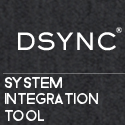Introduction
The file system in Linux can be intimidating coming from other operating systems like Microsoft Windows. At first glance it may seem that there is no organisation to the files, but there is a method to this madness. After spending some more time with the file system in Linux, it will seem a lot more secure and organised.
File System
Linux supports many file systems such as EXT4, BTRFS and FAT32. In many of the file systems that Linux uses, file names are case sensitive. Network file systems such as SMB and NFS can be mounted permanently on a directory if it is available and online.
The Structure
The file structure in Linux is very different to the file system in Microsoft Windows. Windows separates partitions into drives identified by a letter followed by a colon punctuation mark (:). The advantage is if an application is causing damage to the drive recursively, the data on a drive identified by a different letter will be safe.
In Linux, partitions are mounted in empty directories, which is great for applications like media centres that scans a directory to identify media. New drives can be added to the system for new media and mounted inside the existing directory structure for scanning.
|
|
|


Leave a Reply